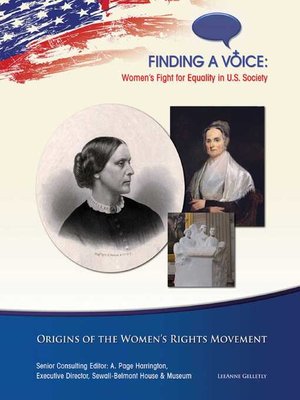Origins of the Women's Rights Movement
ebook ∣ Finding a Voice: Women's Fight for Equality in U.S. Society
By LeeAnne Gelletly

Sign up to save your library
With an OverDrive account, you can save your favorite libraries for at-a-glance information about availability. Find out more about OverDrive accounts.
Find this title in Libby, the library reading app by OverDrive.



Search for a digital library with this title
Title found at these libraries:
| Loading... |
In the 1800s, women were second-class citizens. By law, married women were owned by their husbands. Women had no political rights. They could not vote. They could not hold office. By custom, women did not dare speak before men in public. But some women refused to be silenced. They saw wrongs in the world that needed fixing. The injustice of slavery led women like Lucretia Mott, Angelina Grimké, and Lucy Stone to step outside traditional roles. As women abolitionists, they lectured, circulated petitions, and lobbied lawmakers. But female reformers soon became frustrated. Men-only groups prevented women from speaking. Their help was often rejected. This led a determined few to call for equal rights for women. Among the movement's early leaders were Elizabeth Cady Stanton and Susan B. Anthony. Along with many other women activists, they would fight for a woman's right to be a true citizen of the United States.






